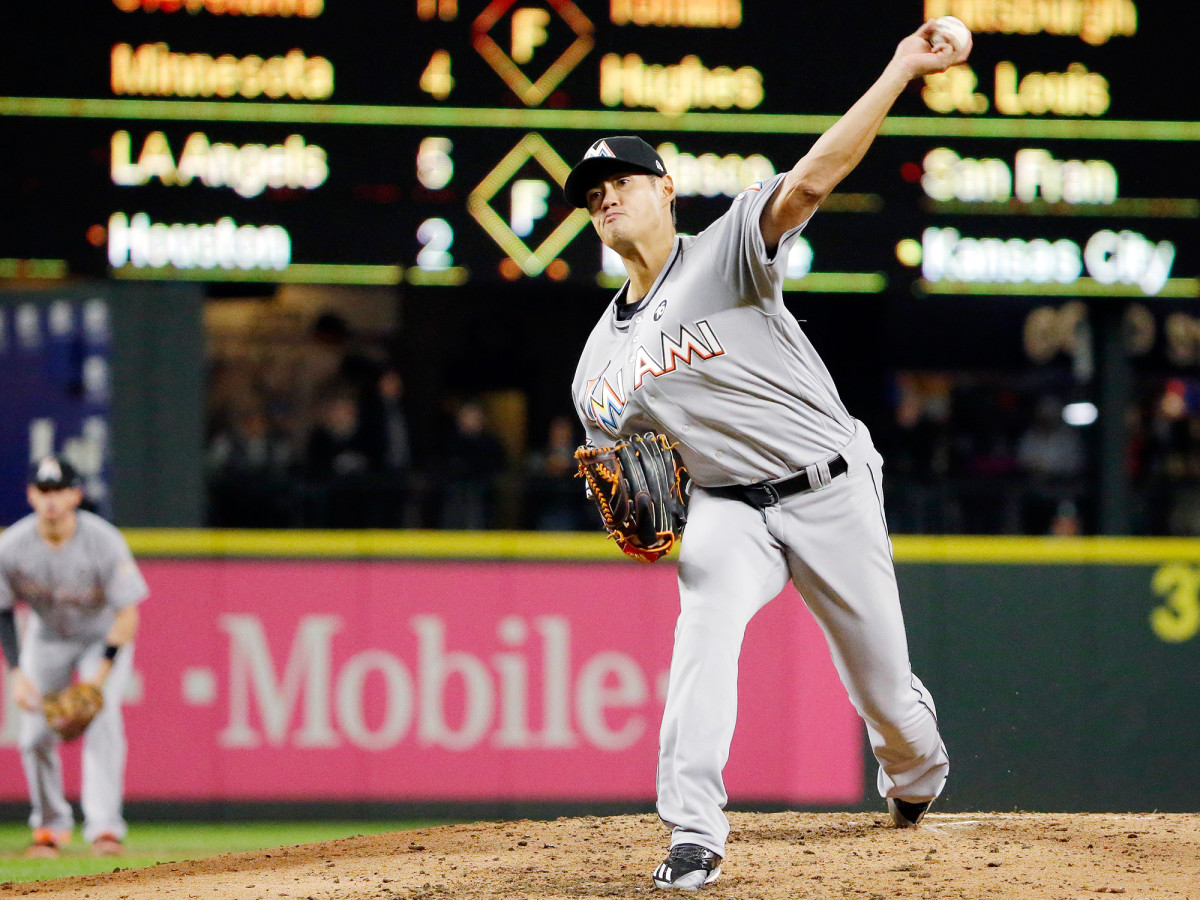Quick outs or quick hook: Surge of stymied no-hitters not evidence of pitchers being babied

Stop me if you’ve heard this one before: Marlins manager Don Mattingly pulled a starting pitcher in the midst of a no-hitter. He did it on Tuesday night against the Mariners, yanking Wei-Yin Chen after seven innings, two walks, a hit-by-pitch, and 100 pitches. The bullpen lost the no-no in the ninth. He did it on Sunday against the Mets, when righty Dan Straily had held the Mets hitless through five-and-a-third innings. Straily had thrown 93 pitches and walked five. The bullpen lost the no-no in the eighth. And he did it in the eighth inning of a 2016 game against the Brewers, when Adam Conley had thrown 116 pitches and walked four but had only four outs to go. Ever reliable, the bullpen lost the no-no in the ninth.
Maybe Mattingly really, really wants to oversee a combined no-hitter (rarer in baseball history than a perfect game). More likely, though, he’s lucky—or unlucky—enough to have been put in position to highlight a surprisingly frequent dilemma in the modern game.
Starling Marte’s PED mistake will linger much longer than his 80-game suspension
Since baseball’s last no-hitter (the Cubs’ Jake Arrieta, over the Reds, 363 days ago), eight starters have been pulled from in-progress no-nos. Never have so many would-be no-hitters been clustered together. Alongside the three Marlins are Oakland Athletics starter Sean Manaea (pulled last Saturday after five innings, 98 pitches, five walks and two runs), the Los Angeles Dodgers’ Rich Hill (pulled after seven perfect innings and 89 pitches in 2016), the Boston Red Sox’s Eduardo Rodriguez (four innings, 64 pitches, removed because of hamstring tightness in August 2016), the San Francisco Giants’ Matt Cain (five innings, four walks, 93 pitches, July 2016) and the Washington Nationals’ Stephen Strasburg (six-and-two-thirds innings, four walks, 109 pitches, July 2016).
Two weeks before before Arrieta’s no-no, the Dodgers had pulled Ross Stripling after he pitched 7 2/3 innings and allowed four walks while throwing 100 pitches. In fairness, that one was a 2-0 game against the division rival Giants, and it became a 2-2 game in the first at-bat following Stripling’s exit.
There’s a temptation to consider this streak further evidence that pitchers are being babied. It isn’t. Only Hill stood a good shot of completing his game without compiling an alarming pitch count, and his injury history happens to make Strasburg’s look minuscule by comparison.
The Baltimore Orioles need to boost their farm system before it’s too late
Mattingly’s 2016 decision to pull Conley occasioned widespread praise. Then as now, Conley was a top young talent, and 116 pitches, then as now, was a lot of strain to put on a developing arm. Mattingly could say in good conscience that he had given the lefty as much of a chance as was prudent to finish the no-hitter. The Straily move, though less widely dissected, made plenty of sense, too: He had walked two men in the sixth inning of a 1-0 game against a division rival and had next to no shot at cobbling together three-plus innings of even decent baseball—forget the no-hitter—before his arm fell off. Pitchers have always been yanked from no-nos in which they’re not pitching all that well.

The Chen move looks a little different. He turns 32 this year and has been relatively durable over his career. (He did miss two months last year with an elbow strain, though the injury was the product of a comebacker rather than a structural flaw.) He’s an innings-eater, not an ace. What great harm would come from pushing him an inning more and reevaluating the situation? What if he had gotten three quick outs?
One imagines, though, that a quick eighth was precisely the situation Mattingly feared. Chen had needed 24 pitches to get through the seventh after a seven-pitch sixth. Let’s say he had a similar workload for the final two innings.
Three Strikes: How the Dodgers are changing the way pitchers are used
Would a 131-pitch no-hitter have been acceptable to a front office that may owe Chen $68 million over the next four years? What about a 131-pitch one-hitter? It took Johan Santana 134 pitches to get the Mets their first no-hitter in June 2012 against the Cardinals. He hasn’t pitched in the majors since that August.
Santana’s cautionary tale must reside in the back of every manager’s mind. I was at that game, and what I remember—aside from the nerves and subsequent elation; I was hugging strangers—is just how little contact the Cardinals made. The box score says they made contact on 38 pitches all night, about 28% of what he threw. Santana was magical, but the Cardinals’ wild bats and his own inability to command the strike zone were both big helpers.
White Sox slugger Avisail Garcia looks like he has finally arrived
Chen’s number last night (batters made contact on 41 of the 100 pitches he threw, putting 18 of them in play) is higher than Santana’s, to be sure. Still, he and the Mariners’ hitters nevertheless combined to work deep counts, leaving him unable to finish a no-hit bid in which he had struck out and walked only two apiece.
Indeed, the present spate of thwarted no-hitters is not a byproduct of the way the game is managed today but the way it is played. Baseball’s waning appetite for contact—blame the hitters who can’t hit for it, and the pitchers who can’t pitch to it—has forced managers’ hands. Get quick outs, or get a quick hook.
